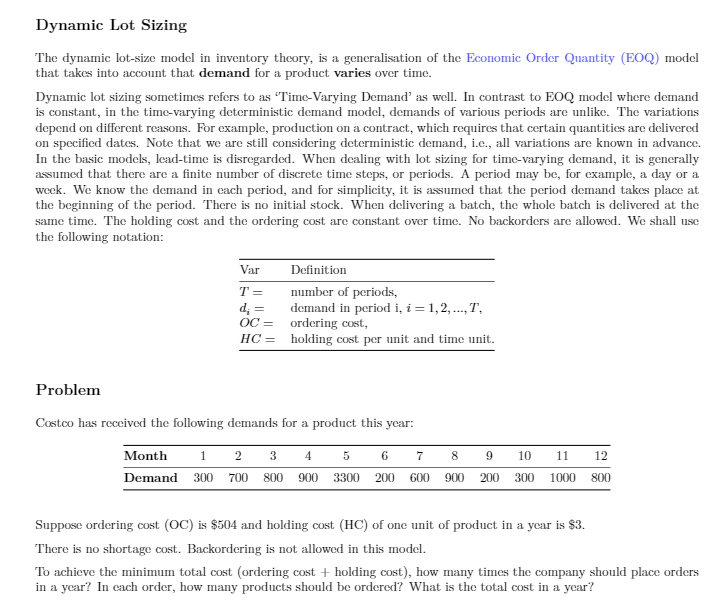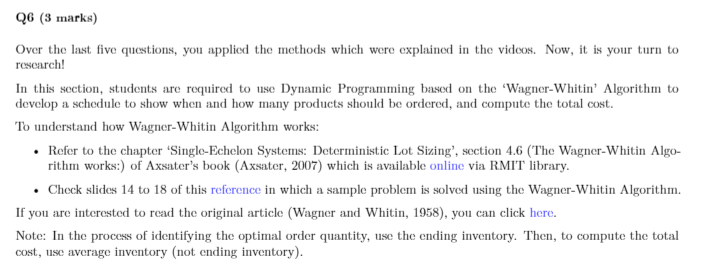Supply Chain Analysis and Design
Dynamic Lot Sizing The dynamic lotsize model in inventmy theory, is a generalisation of the Economic Order Quantity {EDQ} model that take: into account that denland for a product varies over time. Dynamic lot sizing sometimes refers to as 'TimeVaryiug Demand\" as 1IIIII'ell. In contrast to EDQ model where demand is constant, in the timevarying deterministic demand model, demands of various pelirxls are unlike. The variations depend on different reasons. For ermmple, production on a contract, which require-r that certain quantities are delivered on specied dates. Note that we are still mnsideling deterministic demand, i.e., all variations are known in advance. In the basic models, leadtime is disregarded. When dealing with lot sizing Iior timevarying demand, it is generally assumed that there are a nite number of discrete time steps, or periods. A period may he, for example, a day or a week. We know the demand in each period, and for simplicity, it is assumed that the period demand takes place at the beginning of the period. There is no initial stock. 1When delivering a hatch, the whole hatch is delivered at the same time. The holding cost and the ordering cost are constant over time. No backerders are allowed. We shall use the following notation: 1|Il'ar Denition T = number of periods, d- = demand in period i, :i = 1., 1..., T, 00 = ordering cost, HG = holding err-3t per unit and time unit. Problem Crnstco has received the following demands for a product this year: Monthlxi'FBil'l 11 12 Demandaurmammeaamemcmemmnsummsm Suppose ordering cost [0C] is $504 and holding cost [HIE] of one unit of product in a year is $3. There is no shortage cost. Backordering is not allowed in this model. To achieve the minimum total cost {ordering cost + holding cmt},h1mr many timrs the company should place orders in a year? In each order, how many products should be ordered-.7r 1What is the total cost in a year? Q6 (3 marks) Over the last five questions, you applied the methods which were explained in the videos. Now, it is your turn to research! In this section, students are required to use Dynamic Programming based on the 'Wagner-Whitin' Algorithm to develop a schedule to show when and how many products should be ordered, and compute the total cost. To understand how Wagner-Whitin Algorithm works: . Refer to the chapter 'Single-Echelon Systems: Deterministic Lot Sizing', section 4.6 (The Wagner-Whitin Algo- rithm works:) of Axsater's book (Axsater, 2007) which is available online via RMIT library. . Check slides 14 to 18 of this reference in which a sample problem is solved using the Wagner-Whitin Algorithm. If you are interested to read the original article (Wagner and Whitin, 1958), you can click here. Note: In the process of identifying the optimal order quantity, use the ending inventory. Then, to compute the total cost, use average inventory (not ending inventory)








